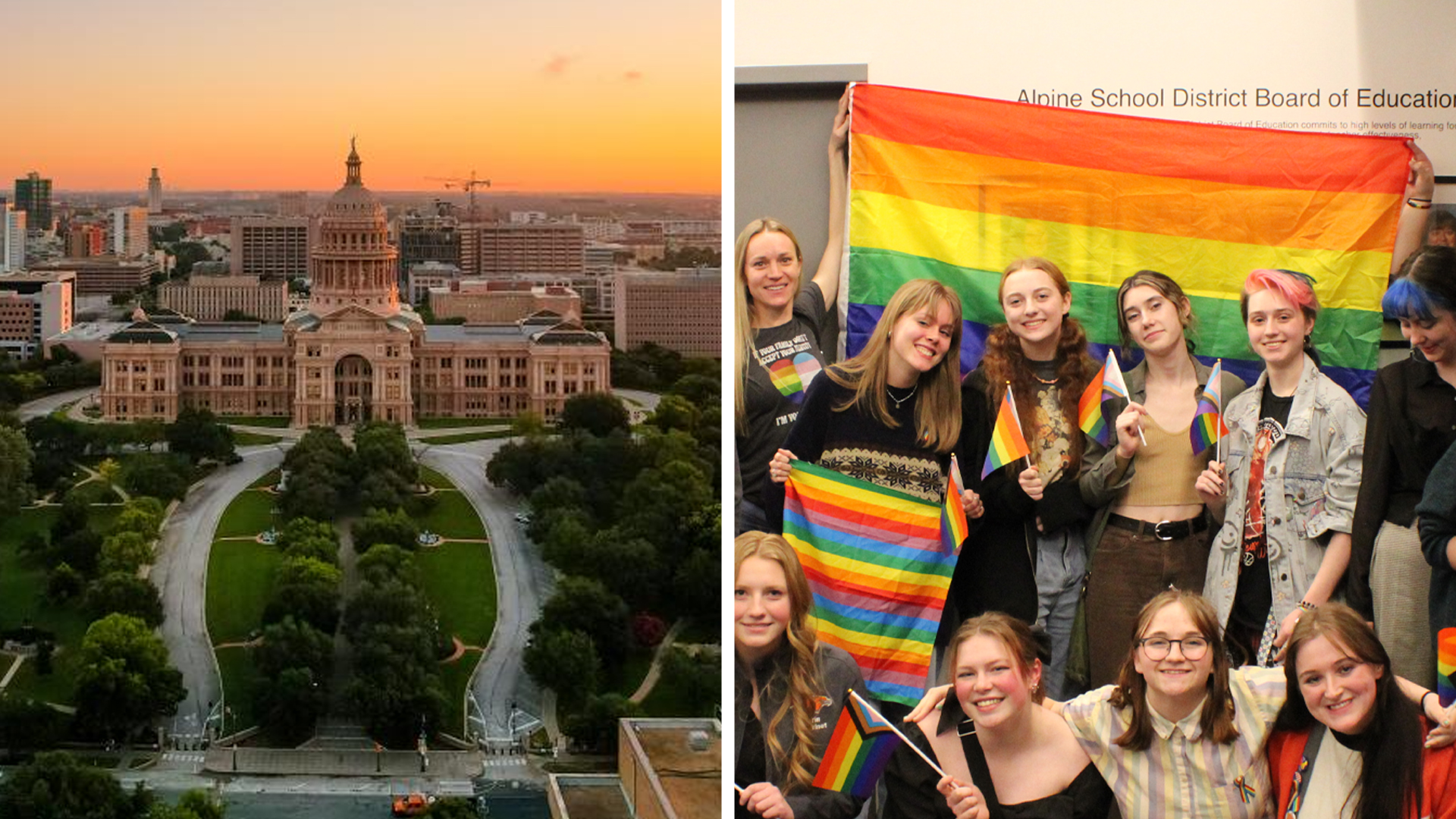In a move that has left educators, students, and civil rights advocates either cheering or scratching their heads, the state of Texas has officially passed legislation banning Pride flags from all classrooms. While some say this is a monumental step toward “keeping politics out of education,” others view it as a direct attack on inclusivity and diversity. The new law has sparked heated debates, online outrage, and even rumors that next on the chopping block might be rainbow-colored clothing, glitter, and anything resembling a unicorn.
Governor Greg Abbott, alongside a group of Texas lawmakers, signed the “Flag Integrity Act” into law, which explicitly prohibits the display of any Pride flags, including LGBTQ+ symbols, in all educational institutions. The rationale, as explained by Governor Abbott, is simple: “Our classrooms should be a place of learning and not a place to push social or political agendas. There’s only one flag that belongs in the classroom, and it’s red, white, and blue.”
To enforce the ban, Texas has reportedly hired a special task force, which some critics have dubbed “The Rainbow Rangers.” These inspectors will roam the halls of Texas schools, on the lookout for contraband rainbows and anything vaguely resembling a symbol of Pride. Caught with a rainbow sticker? That’s a detention. Displaying a flag? Suspension. Educators are even being warned that decorating with too many colors might raise suspicion.
For those celebrating the ban, it’s being hailed as a victory for “traditional values” and “common sense education.” Supporters argue that by removing Pride flags, schools are becoming neutral zones free of divisive politics. “What’s next, the American flag in every classroom?” said one particularly enthusiastic supporter on Twitter. “Finally, we’re getting back to the basics—reading, writing, and respecting the flag.”
However, for LGBTQ+ advocates and their allies, the law feels like a direct affront to progress. Many see it as a regression to an era where issues of gender identity and sexual orientation were pushed into the shadows. One teacher, who asked to remain anonymous, described the new law as “absurd” and wondered if it was part of a bigger plan to erase any hint of diversity from the curriculum.
School administrators across Texas are already scrambling to adjust to the new rules. Principals are rewriting dress codes, warning students that their rainbow shoelaces, pride-themed backpacks, and even multicolored notebooks could be seen as “politically charged” items. “We’re really trying to interpret the law here,” said one harried school principal. “What if a kid shows up with a rainbow on their t-shirt? Is that grounds for suspension? Do we start banning art projects that involve more than three colors?”
Meanwhile, art teachers are reportedly stockpiling supplies in fear that anything brighter than beige might lead to their dismissal. “I’ve spent years teaching kids about the beauty of diversity,” said one art teacher. “Now, I’m supposed to stick to painting in shades of grey? I guess we’re going full 1950s here.”
Amidst the rainbow purge, rumors are swirling that Texas might soon introduce a statewide school uniform mandate. “It’s all about uniformity and discipline,” said one lawmaker, who suggested that students should wear only one of two colors: “red or blue,” because, apparently, mixing colors is how rainbows happen.
There is also speculation that the “Flag Integrity Act” might extend to other symbols, with some extremists even suggesting that any flag other than the Texas or U.S. flag should be banned. The state capitol, it seems, might just declare war on festive pennants, soccer team banners, and any depiction of anything remotely cheerful.
As news of the Pride flag ban spread beyond Texas, reactions across the country have been mixed. In California, known for its progressive stance on LGBTQ+ issues, one governor commented, “Leave it to Texas to find the time to police rainbows while the rest of us deal with actual issues.” On the other hand, several conservative states have expressed admiration for the Texas law, and there are whispers of similar legislation being considered in Florida, Alabama, and Tennessee.
Even international organizations have chimed in. One European education minister remarked, “I guess Texas wants to turn back time and limit expression. We just hope their clocks don’t stop before 2023.”
While some students may quietly swap out their rainbow accessories for more neutral tones, others are determined to push back. In a show of rebellion, students across the state have organized online, launching the #RainbowRevolution hashtag. Many are now planning to wear rainbow socks, hair ties, or even just scribble little rainbows on their notebooks to see how far the new law will go.
“I’m not trying to break the rules or disrespect my school,” said one Texas high schooler, “but I’m not going to let some out-of-touch politicians tell me I can’t show pride in who I am. What’s next, banning creativity?”
Another student said, “They can take our flags, but they’ll never take our glitter!”
As Texas educators, students, and administrators adjust to life under the new “Flag Integrity Act,” the debate over how far schools should go to police symbols of Pride continues. For supporters of the ban, it’s about restoring traditional values and ensuring that classrooms remain free of political influence. For opponents, it’s a step backward, a return to a time when diversity and inclusivity were marginalized.
While the future of Pride flags in Texas classrooms may be uncertain, one thing is clear: the fight over what belongs in schools—and who decides—has only just begun. For now, the rainbow might be out of sight, but for many, it’s certainly not out of mind.

